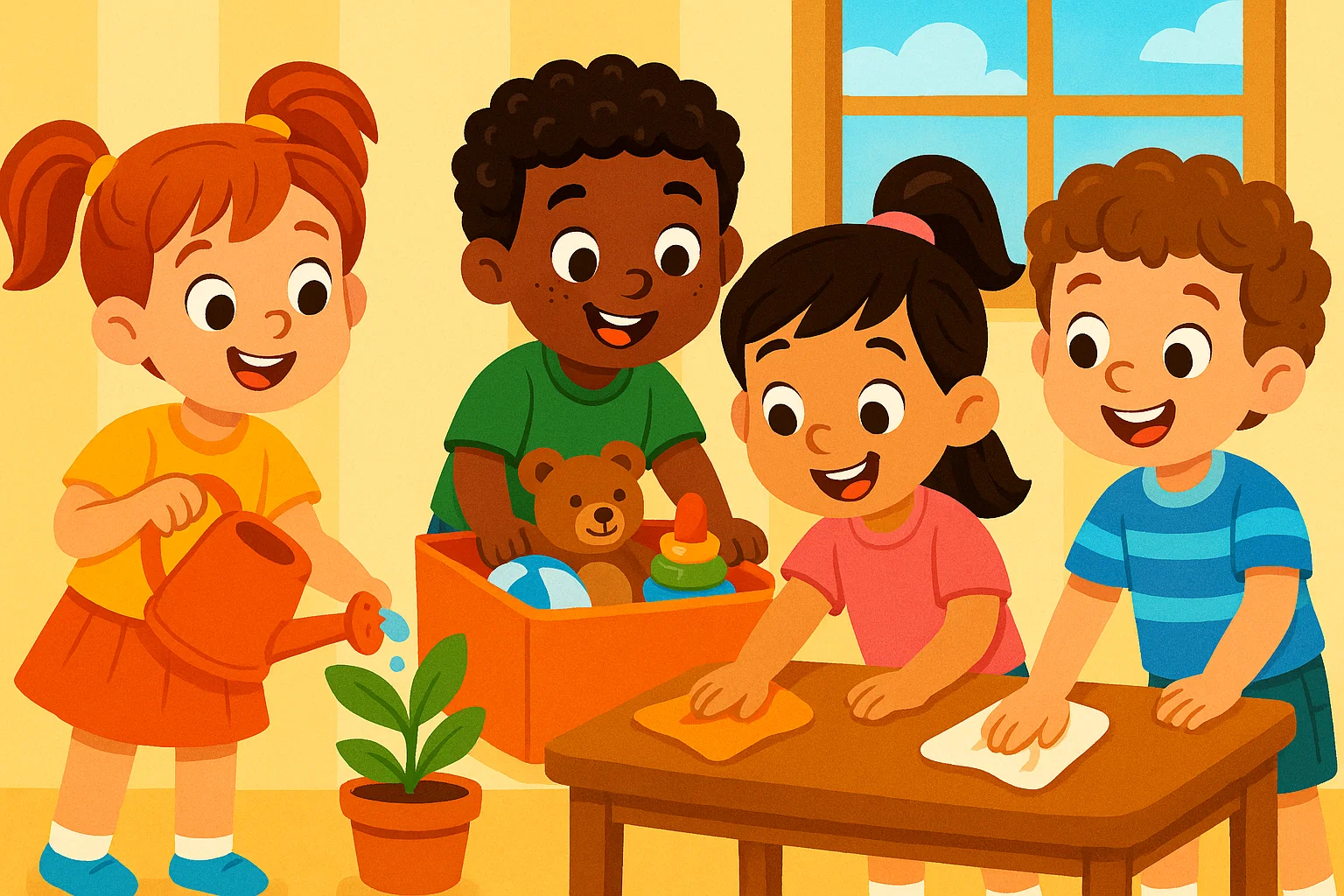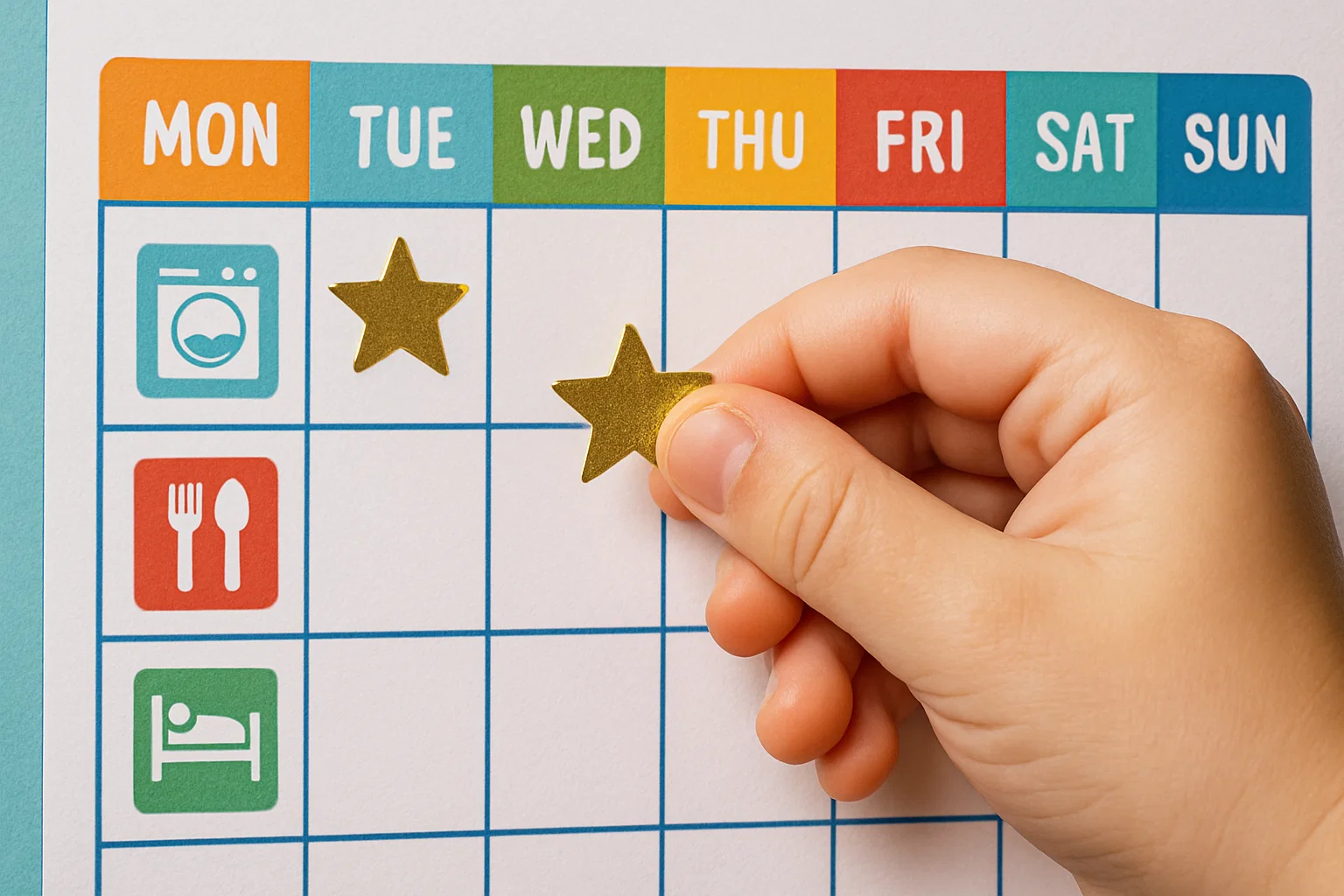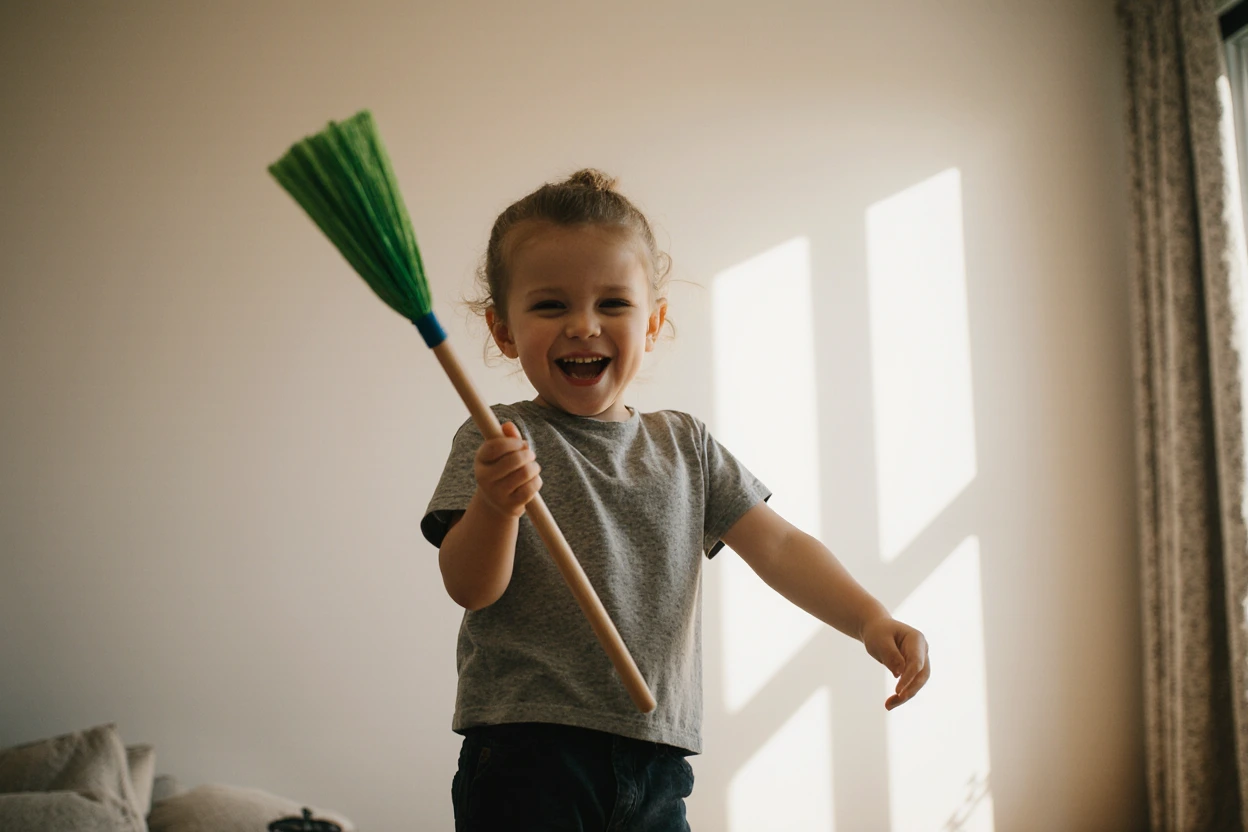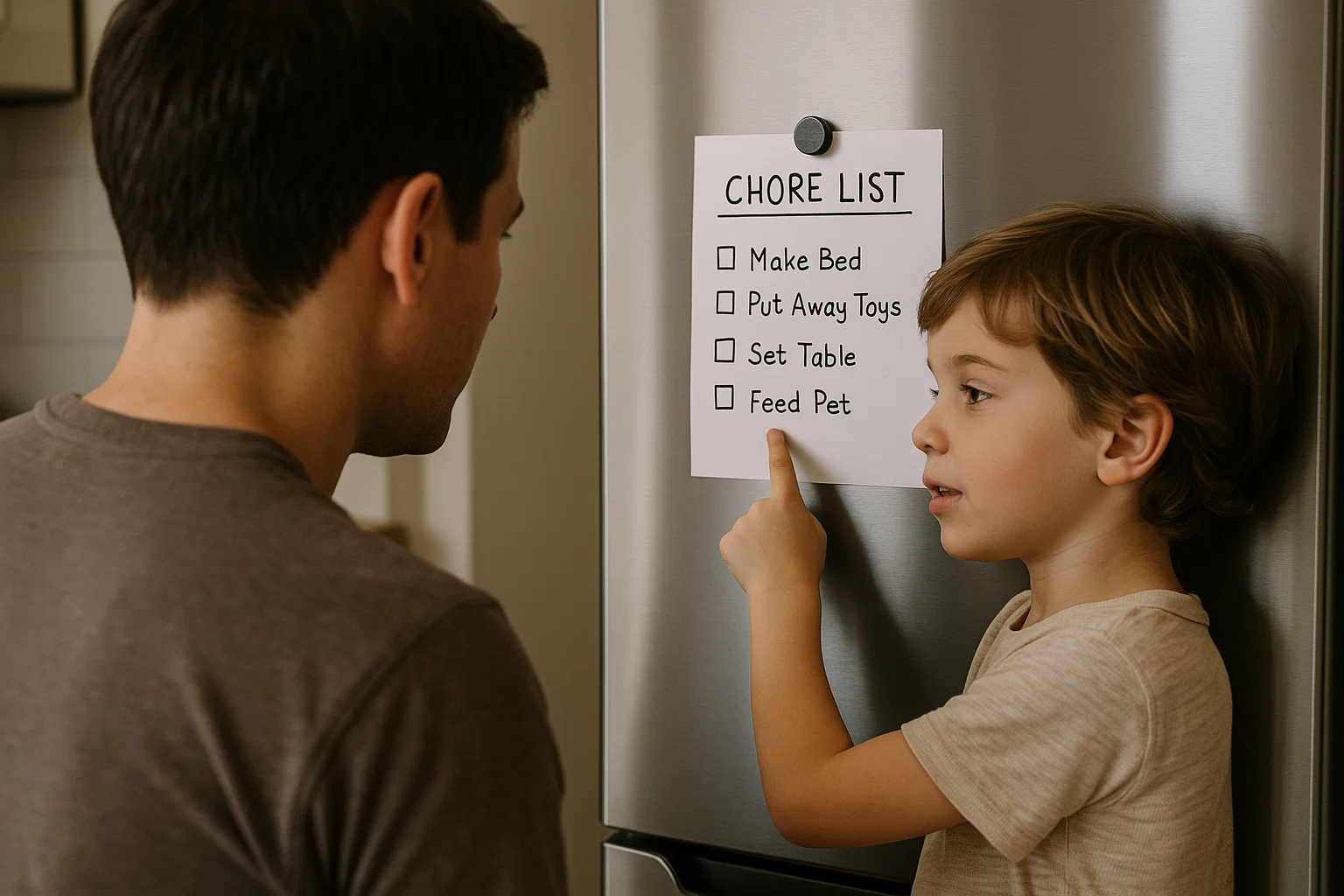Age-Appropriate Chore List for 6 Year Olds: Chore Ideas and Life Skills

The school-age years, particularly around age six, mark a period of growing independence and a desire for more responsibility. This developmental stage is an opportune time to introduce a helpful chore list and foster a sense of capability that will be beneficial for life. Integrating age-appropriate chores into family life is not about creating a heavy workload; it’s about teaching essential life skills, cooperation, and the value of contributing to the household.
Chores can help children feel competent and significant. Learning to play an important role in the household can boost self-esteem. This guide offers practical chore ideas and a printable checklist to help 6-year-olds get started on a journey toward becoming responsible and helpful family members.
Age-Appropriate Chore List for a 6 Years Old
Here are 30 helpful chore ideas for 6-year-olds. It’s best to introduce a few tasks at a time, providing clear instructions and supervision until the child can complete them independently.
Personal Responsibility Chores

These kids chores focus on self-care and keeping their personal space tidy.
1. Make Their Bed
This chore establishes a great morning routine. The focus should be on the effort, like pulling up the comforter and arranging pillows, not on perfect hospital corners.
2. Get Dressed Independently
A great way to build independence and fine motor skills. This includes tackling tricky buttons and zippers, fostering self-sufficiency for the school day.
3. Brush Teeth and Hair
While they can perform the action, a reminder is usually needed. This reinforces personal hygiene as a non-negotiable daily habit.
4. Put Away Shoes and Coat
This teaches the habit of keeping entryways tidy. Designating a specific, accessible spot for these items makes the task clear and easy to follow.
5. Pick Up Toys
A fundamental chore that teaches responsibility for personal belongings and helps keep their own space and family areas tidy.
6. Put Dirty Clothes in the Hamper
This simple task connects the dots between wearing clothes and the laundry process, helping to keep bedrooms neat and organized.
7. Help Clean or Tidy Their Bedroom
This can be broken down into smaller tasks like putting books on a shelf or arranging stuffed animals, giving them ownership and pride in their personal space.
8. Help Pack Their Lunch
A great way to teach planning and healthy choices. They can help by grabbing a yogurt, washing a piece of fruit, or putting items into their lunchbox.
Helping Around the House

These household tasks teach children to care for shared family spaces.
9. Empty Small Trash Cans
Six-year-olds can easily manage emptying bathroom or bedroom trash cans into a larger kitchen bin, a simple yet helpful household task.
10. Dust Furniture
Using a duster or a microfiber cloth, this is a simple chore that makes a visible difference and helps with coordination and attention to detail.
11. Sweep Floors
With a small, child-sized broom and dustpan, they can help sweep up crumbs in the kitchen or dirt in the entryway.
12. Wipe Down Bathroom Surfaces
With a non-toxic cleaning spray or a damp cloth, they can help wipe down the counter, teaching them basic cleaning skills with supervision.
13. Carry Laundry to the Washer or Dryer
They are old enough to carry their own small basket of clothes to the laundry room, participating in the family’s laundry cycle.
14. Fold Towels and Simple Laundry
Folding simple rectangular items like hand towels and washcloths is a great introduction to laundry skills and helps develop motor skills.
15. Help Clean Spills
This teaches immediate responsibility. Show them where to get a cloth or paper towel to wipe up small messes they make.
16. Wipe Down Light Switches or Door Handles
This is a great detail-oriented task that helps them notice parts of the house that need cleaning and contributes to a healthier home.
17. Help Put Away Toys and Books
This chore reinforces the idea that shared spaces, like the living room, need to be tidied up by everyone who uses them.
Kitchen and Mealtime Chores

Getting children to help in the kitchen is a great way to teach them about food and cleanliness.
18. Help Set the Table
This task teaches one-to-one correspondence (one plate per person) and helps them learn where utensils and napkins go for a family meal.
19. Clear Their Own Dishes
A core responsibility after every meal. This teaches them to clean up after themselves before leaving the table.
20. Put Their Dirty Dishes in the Sink or Dishwasher
The next step after clearing the table. Show them how to safely place items in the sink or load non-sharp items into the dishwasher.
21. Help Dry Dishes
If you hand-wash dishes, they can help by drying non-breakable items with a clean towel.
22. Help Prepare Simple Meals
This builds confidence in the kitchen. They can help make a sandwich, stir ingredients in a bowl, or wash vegetables.
23. Put Away Groceries
Assign them to put away items in low, easy-to-reach cabinets or the pantry, making them a key helper after a shopping trip.
24. Wipe Down Kitchen Counters or Tables
After a meal or snack, they can use a damp cloth to wipe down their eating area or a low section of the counter.
25. Help Empty the Dishwasher
A very helpful chore. Assign them unbreakable items like plastic cups, containers, and silverware to put away in low drawers.
Outdoor and Pet Care Chores
These weekly tasks connect kids to nature and teach them to care for living things.
26. Feed Pets and Refill Water Bowls
A very important job that teaches empathy and responsibility for another living creature. Supervision is needed to ensure the right amount of food is given.
27. Water Houseplants
With a small, manageable watering can, kids can learn to care for plants. This teaches them to be gentle and observant of the needs of living things.
28. Help Pull Weeds
A great way to get fresh air and contribute to yard work. Show them which plants are weeds to build their knowledge of the garden.
29. Help with Raking Leaves
While they may not be able to rake a whole yard, they can have their own small rake to help gather leaves into piles—a fun and active task.
30. Help Clear Mail or Newspapers
A simple task that makes them feel important. They can be responsible for bringing in the mail from the doorstep or mailbox.
Why a Chore List is a Great Way to Build Life Skills
For 6-year-olds, moving beyond the simple tasks of toddlers and preschoolers is a major step. At this age, children’s chores are less about perfection and more about participation. The right task can reinforce motor skills, teach them to follow multi-step directions, and instill a work ethic.
Chores help 6-year-olds:
- Develop Responsibility: Learning that certain jobs depend on them teaches accountability.
- Build Confidence: Completing a task independently provides a powerful sense of accomplishment.
- Learn Important Life Skills: Simple household tasks like tidying up and helping with meals are foundational for future independence.
- Foster Cooperation: When children help around the house, they understand that family life requires everyone to work together as a team.
Setting Expectations: Motivating a 6-Year-Old

Getting kids excited about chores is all about the approach. It’s crucial to make chores a normal part of the daily routine rather than a punishment.
Create a Chore Chart
A visual reminder, such as a chore chart or checklist, is highly effective for this age group. A chart helps a child track progress and see what is expected. Stickers or checkmarks can be used to signify a job well done, which can be highly motivating for young children.
The Allowance Debate
The question of whether to pay for chores is a common one in parenting. There are two main schools of thought:
- No Allowance for Daily Chores: Many experts believe that daily chores are a child’s contribution to the family, just like parents contribute. In this model, an allowance might be given separately to teach money management skills, independent of household tasks.
- Allowance as a Reward: Other families find that linking an allowance to completed chores is a great way to teach about work and earning. In this system, there may be a base set of unpaid daily chores, with an option to earn money for extra chores.
Praise and Encouragement Over Perfection
For school-age children, the effort is more important than the result. The goal is to reinforce the habit of helping. Praise for a job well done provides positive reinforcement and makes children feel valued. Setting expectations clearly and offering encouragement helps motivate them to become competent and confident in their abilities.
